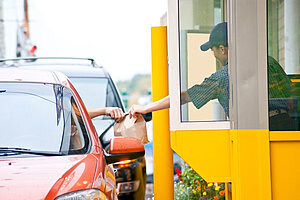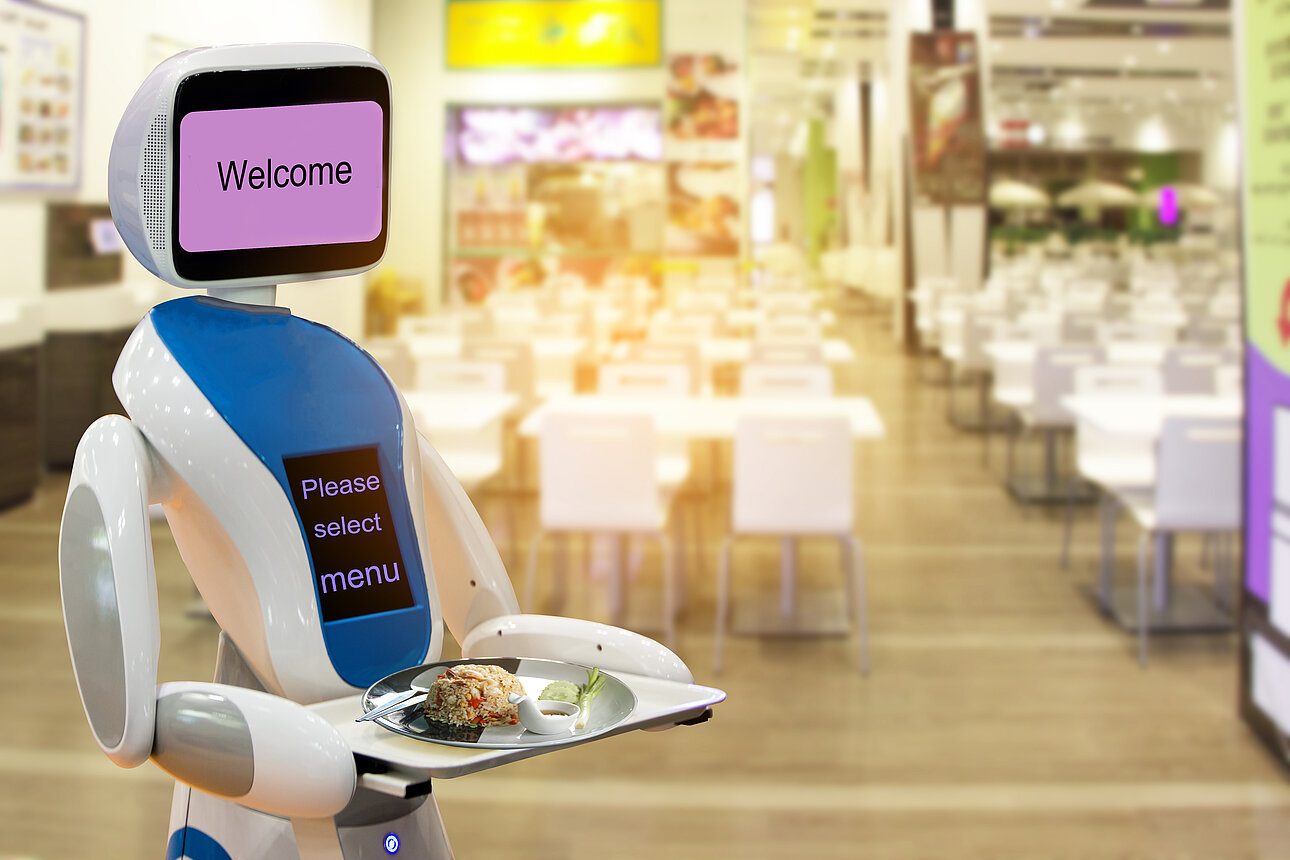AI Meets GI: The Ongoing Role of Technology in the Restaurant Setting
Artificial intelligence (AI) hasn’t quite reached the level of sentience seen in post-apocalyptic sci-fi films, but it is growing in leaps and bounds, infiltrating nearly every industry.
While dining out is about more than just the food — customers come for the atmosphere and interaction as well — it’s easy to see why the food industry is turning to AI.
New technologies can help curb food waste, streamline supply chains, inform product innovation, and increase customer convenience. How are restaurants using AI to improve operations and the consumer experience?
 Self-Checkout
Self-Checkout
Grocery and retail stores are still fine-tuning this point of sale (POS) convenience, but there’s no denying that self-checkout technology can cut down on consumer wait times when it’s functioning properly. How are restaurants implementing self-checkout options in fast food, fast casual, and sit-down establishments?
Tablets are the preferred option for self-checkout, and they might be posted at a drive-through, the entrance or counter at fast-casual joints, or even at individual tables for sit-down restaurants. These devices are basically an in-house means of ordering online.
With a full menu, customization options, and digital payment, this technology allows customers to order and pay when they’re ready and frees up servers to do just one thing — bring the food.
It allows restaurants unique opportunities to counteract rising costs related to inflation, minimum wage, and more. It’s also used for consumer tracking, which aids in data analysis, targeted marketing, and innovative product development.
 Drive-Through Chatbots
Drive-Through Chatbots
What if tablets talked back? This is the basic premise behind the AI chatbots some companies are using to enhance self-checkout technologies.
Wendy’s is leading the way with Wendy’s FreshAI, an interactive drive-through solution that relies on generative AI to create a positive and fulfilling consumer experience.
With the ability to adapt in real-time and generate personalized responses, this technology is designed to understand and participate in casual conversation rather than simply following a strict set of rules (such as recognizing menu items to add to an order).
Adaptability is important when there are so many ways to order and customize menu items. It helps ensure accuracy without sacrificing speed.
According to Wendy’s, the system success rate at delivering orders accurately is 99% (including cases where human correction is necessary) and wait times at the drive-through decreased by an average of 22 seconds.
AI-Generated Recipes
The culinary world is fiercely competitive, with top-rated chefs constantly seeking the next innovation to catch consumer interest and earn accolades. It seems crazy to think that AI could enter the fray, but that’s exactly what’s happening, with businesses from fast casual establishments to major food manufacturing brands giving it a whirl.
Texas-based Motor City Pizza admits to using ChatGPT to create recipes from prompts like “Mexican street-corn pizza,” while Dallas-based Velvet Taco simply plugged in ingredients to see what kind of recipes the software would spit out.
The ChatGPT taco with blackened shrimp, flank steak, crispy potatoes, chimichurri, red chile aioli, queso fresco, cilantro, jalapeño, and grilled onion became the restaurant’s best-seller in 2023.
Even major chains and brands like Shake Shack and Coca-Cola have dipped their toes in the warm waters of AI recipe creation. The Y3000 flavor Coca-Cola released in 2023, purported to taste like the future, was partially created by AI.
AI Today and Tomorrow
While it’s never easy to predict exactly where technology will be in the coming months and years, its increasing use in restaurants and the food industry as a whole is all but assured.
As a restaurant or food manufacturer, there are plenty of ways to incorporate AI to cut costs, streamline operations, and improve both customer and employee experiences.
To learn more about our trends and initiatives, contact us HERE.






